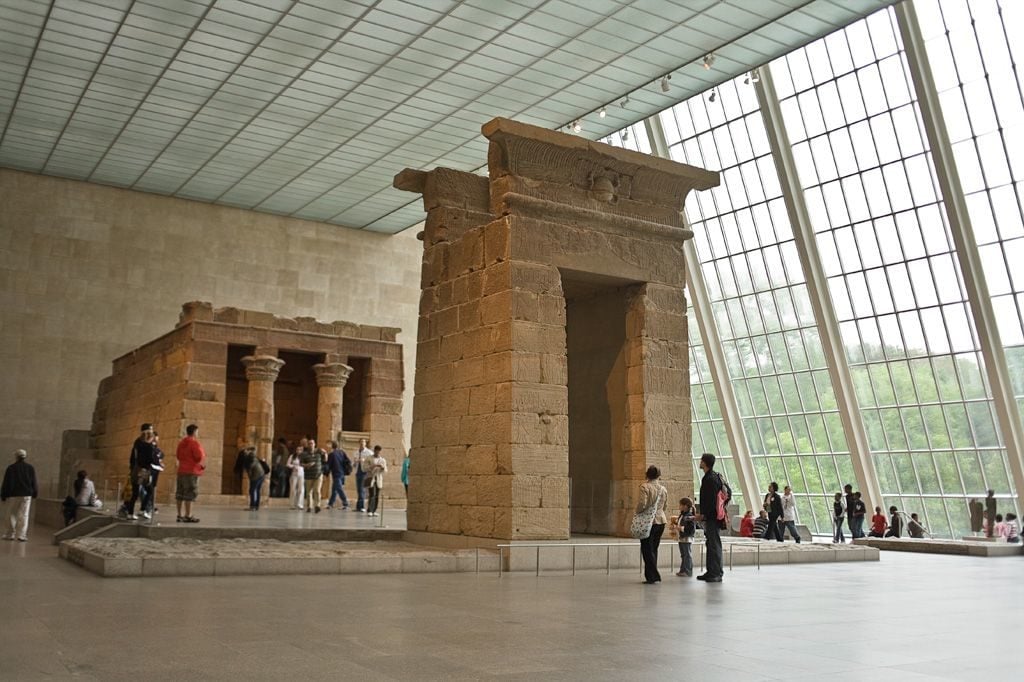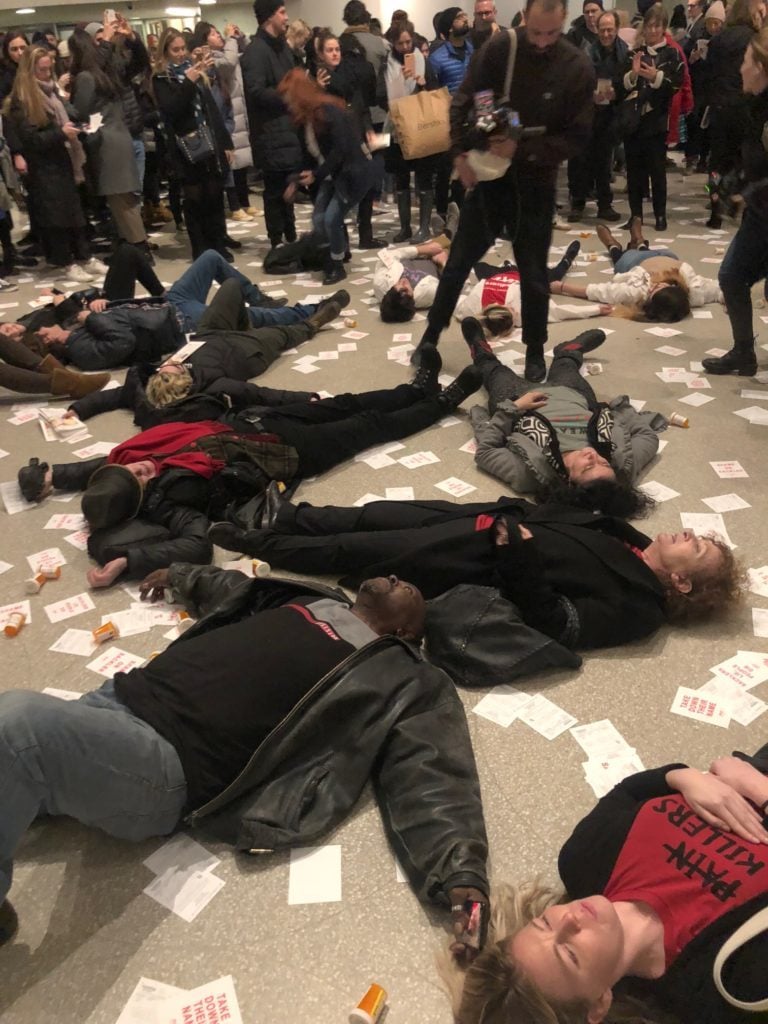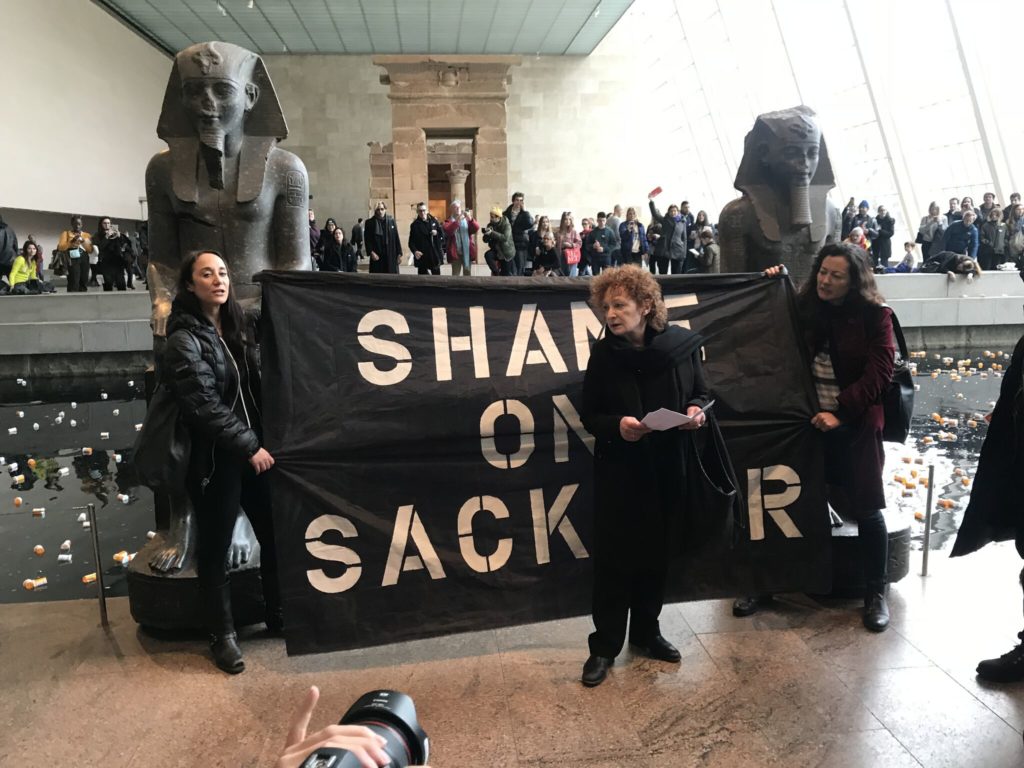Art World
‘They Are Going to Stand by Us’: Text Messages Between Members of the Sackler Family Show How They Leveraged Their Museum Philanthropy Into Positive PR
Sackler family members also fretted over how to manage artist Nan Goldin's activism.

Sackler family members also fretted over how to manage artist Nan Goldin's activism.

Taylor Dafoe

A trove of private messages between members of the Sackler family, who own the opioid manufacturer Purdue Pharma, reveals the ways they attempted to leverage their years of philanthropy to solicit positive PR from museums during the scandal over their role in the opioid crisis.
Exchanged between October 2017 through June 2019 on WhatsApp, the messages were recently made public as part of Purdue’s ongoing bankruptcy litigation (and first reported by The.Ink), which follows the company’s guilty plea and $8.3 billion settlement agreement last month. Numerous high-profile institutions are referenced in the various chats, including the Dia Art Foundation, the Metropolitan Museum of Art, and the American Natural History Museum.
“I just spoke to head of communications at [the Dia Art Foundation],” wrote Marissa Sackler, granddaughter of former chief executive of Purdue Pharma Mortimer D. Sackler, in an October 2017 message. She mentions that a reporter from the New York Times was in the process of reaching out to art institutions for an article on their relationship to the family. “Dia shares pr representation with the tate [sic] and a number of other art institutes who’ve been contacted. They are all planning to give short positive statements about us being supporters of theirs.”
The family has many branches: Purdue Pharma was founded by brothers Arthur, Mortimer, and Raymond Sackler in 1952, but Arthur’s one-third share in the company was purchased by his brothers upon his death in 1987, eight years before OxyContin came to market.
Asked for comment on the exchanges, a spokesperson for Dia said it could not comment on private messages between members of the Sackler family, “but needless to say Dia has the utmost respect for Nan Goldin as both an artist and campaigner. In 2018, Marissa Sackler stood down from Dia’s board and we discontinued the Sackler naming associated with our public programs, from which point Dia has not been formally connected with the Sacklers.”

Protestors at the Guggenheim Museum stage a “die-in” to protest Sackler funding. Photo: Caroline Goldstein.
The museum discussion sprung up again in March 2018, when Mortimer A. Sackler, the son of the former CEO and father of Marissa, said: “Jackie spoke with the Met this morning and they are going to stand by us.”
Mortimer A. Sackler’s message came shortly after artist Nan Goldin staged a much-publicized demonstration at the Metropolitan Museum of Art—the first with her activist group Prescription Addiction Intervention Now (PAIN)—in which she demanded the institution remove the family’s name from its Sackler Wing. (In October, the museum told Artnet News that the name of the wing was “under review” following Purdue’s guilty plea.)
“I speak regularly with dia on all of this and they fully support us and think Nan Goldin is crazy,” Marissa Sackler responded. “I will touch base with them again in light of Saturday’s stunt.”
“I am reaching out to the [American Natural History Museum] through the chairman of the board’s best friend,” added Ilene Sackler Lefcourt, daughter of Mortimer Sackler the senior.
In response to the newly published messages, the Met said in a statement that it had “no knowledge of this communication. The Met has made clear our position: we suspended accepting funds from the Sackler family in May 2019, and we are currently evaluating our approach in light of recent judicial developments.”

Nan Goldin speaking at the protest at the Met last summer. Photo: Michael Quinn.
When asked about the Sackler family’s texts in which she was mentioned, Goldin told Artnet News, “I find them funny.”
“For decades they hid behind their philanthropy to whitewash their reputation,” the artist continued. “In 2017, I decided to target them through the museums at the same time they were turning to the museums for help. It was a perfect convergence. It was distressing to see these museums come to their side.”
In that same March 2018 exchange, the younger Mortimer Sackler said that “[Purdue Pharma] extended several invitations to [Goldin] and she has refused to engage,” before noting that he’s glad she didn’t.
“Here is the thing, if she takes the company up on that offer she could use the meeting as a stunt and she can come out of it saying any kind of crazy thing. She isn’t a rational person who is going to come out saying, ‘I’ve reconsidered my position.’ It’s actually good that she hasn’t taken Purdue up on that.”
He continued that his hope was to use the press to change the narrative. “Better that the company use her protests as an opportunity to speak to the industry leading work they have been doing to combat prescription drug abuse,” Mortimer said. “What we SHOULD do is make sure that the Guggenheim, AMNH, DIA, etc are not going to say something unhelpful. We should compile a list of organizations and decide who should speak with which.”
Goldin denied ever receiving such an invitation from the company, though says that Mortimer Sackler’s assumption was right. “It is true that I would have done an action,” the artist said. “I would have been irrational.”
Representatives for the Sackler family did not respond to a request for comment.